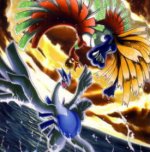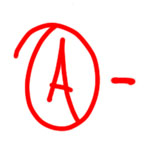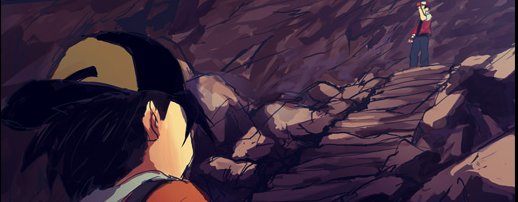 Final verdict: A-
Final verdict: A-
Final playtime: Who knows? Climpa sure doesn’t.

It’s difficult to know where to start when it comes to writing about Pokemon. At its heart, the main series has been consistent for 15 years now. Receive your first Pokemon from the town’s local Pokemon Professor, go out and befriend more little monsters, and then set off on a cross country with nothing but a backpack and a dream of being the best there is at making animals fight each other. And so – like a twisted cross between cock fighting and magical rock, paper, scissors – does your Pokemon journey begin. Alone at an inappropriately young age, with your only source of income being to beat up other little kids’ pets and take their money.
The basic premise of a core Pokemon game is the same as it always has been, 4 core titles and 2 spin offs later, and yet somehow what little motivation you receive is enough to push you onwards. There are almost no significant events to speak of in any of the games; with dialogue and scripted cut scenes used sparingly , unless the player chooses to chatter with NPCs . Players are drip fed new mechanics – or occasionally forced to distract themselves from their ultimate goal in order to solve the problem of the week – in order to motivate them to continue to play. It feels like every other town you visit has a crisis of epic proportions, that only a 10 year old kid and his or her 6 deadly animals can solve. These minor distractions are just frustrating enough that when you’re done you want to get back to defeating the town’s gym leader, but not quite so much that you want to call it quits half way through stopping Team Rocket.
It’s startling the lengths at which Game Freak has gone to develop such a deep RPG system, while at the same time maintaining an ignorant simplicity to the game. Since the very first game in the series it has been stated that every Pokemon is different; the chances of you and your friend both having statistically identical Pokemon at the same level is slim to nil. Early titles in the series achieved this by having each of your monsters’ stats accumulate their own sort of exp, based on the characteristics of the things you fought. Defeating a quick Pokemon would contribute points towards raising your Speed stat upon level up, while defeating a Pokemon built like a tank would give you points towards your Defense or HP increasing on level up. On top of this, each of the Pokemon you caught would be attributed a series of random bonus values to all of their stats, which would scale to their full potential at Level 100.

Later versions built on this by adding “hold items”, equipment for a lack of better term, that generally provided a latent or passive bonuses and each Pokemon. Like most RPGs, items ranged from generic and equippable by all – to items which only benefits are to a specific Pokemon. As well as this, Attributes were introduced to further act as a balancing point for each Pokemon, with some receiving a range of possible passives. The majority of these act to provide the usual array of RPG benefits including increased damage, reduced damage taken from weaknesses, immunity to certain debuffs, etc; but where multiple variations on the same Pokemon occur, there are often abilities that are less practical in battle but helpful on the over world. A more recent feature to be added is that of your Pokemon’s “Nature”. Since the Gameboy Advance versions, each Pokemon has a randomly assigned 10% increase and decrease to one stat (with an increase and decrease to the same stat registering as no bonus or penalty).
The combination of these multiple stacking levels of complex stat building mechanics has resulted in a robust metagame community, admittedly largely consisting of people 10 years too old to be seen playing the games in public. Competitive players will spend weeks or months at a time breeding dozens of potential candidates for their team, all in an effort to have the right combination of attributes, nature, stat bonuses and movesets – and carefully and meticulously leveling them in a way that kills enemies that only increase the stats that they want to be increased – in order to raise the best team they can. Sadly, there in lies the Pokemon series’ biggest flaw.
As petty as it may be to argue such a point in relation to something so clearly aimed at children, balance is a huge issue in the metagame. Ignoring the understandably broken “Legendary Pokemon”, whose very existence is defined by their ability to achieve Akuma-esque levels of overpowered, it feels like virtually every single monster in the game genuinely serves a purpose. With the creative use of Pokemon specific equipment, or the abilities they get, in combination with their available movesets you genuinely get the idea that (on paper at least) everything was designed to be viable in its own way. Except for Luvdisc, I have no idea what’s going on there, seriously. Unfortunately, as competitive metagames often do, extensive min-maxing only serves to increase the balance gap. As a result of this, a lot of Pokemon are in need of review; some only need a slight re-balancing, where as others are in dire need of an overhaul (Luvdisc).
As far as the main game itself goes, Pokemon Heart Gold and Soul Silver continue the tradition of heaping on more and more optional/post game content in order to keep you entertained for as long as possible. There are now almost 500 Pokemon to acquire in the obligatory quest to catch them all, as well as the Battle Frontier, Pokeathalon events and day/time specific events providing extra content. The Battle Frontier is a relatively straight forward area, where players compete in 3v3 competitions balanced in an attempt to reflect competitive play, with victory resulting in the player being awarded points to spend on unique equipment/items. The Pokeathalon is essentially the Pokemon Olympics, played out in mini games. Each monster has a variety of attributes that make the types of games played easier or harder. A bird Pokemon is going to excel far easier at a high jump like event, where as something built for running is going to fair better in a relay race.
By far the best piece of post game content featured in Heart Gold/Soul Silver though, isn’t one of the new features, but rather the same content it has had since the original release; and one of the biggest reasons it’s still considered one of the best of the series by fans. Upon completion of your initial goal of defeating the 8 Gym leaders and taking on the Pokemon League, players are then given access to the entire world of Red/Blue/LeafGreen. 3 years have passed since those games, and a few things have changed here and there, but for the people that played those games it’s a pretty big nostalgia bomb. Between the mere existence of such areas, and the encounters (and re-encounters) you have there, it really drives the point home that Gold and Silver are a true sequel to the original games.

Lastly the Pokewalker, while initially coming across as the latest addition to Nintendo’s faux keep fit persona, serves as a fun companion to the game. While it’s not the first pedometer Nintendo have slapped the Pokemon brand on, it is the first one to fully interact with the games. You can send your monsters to it and take them with you as you walk to level at times you otherwise couldn’t play the main game. Themed walking paths which your Pokemon stroll along with you provide a chance to catch some rarer Pokemon earlier in the game that you initially would be able to; and Nintendo appear to be ready with a host of downloadable courses via the Nintendo WFC. The real shame is that it’s likely to be a one shot deal, unless Black and White can update the firmware of the walker, or come with their own version of it.
All in all, you could do a lot worse than Pokemon when it comes to jRPGs. And you have access to a lot more of the core mechanics in just a few hours than you would in Final Fantasy XIII.
Final Verdict: A-